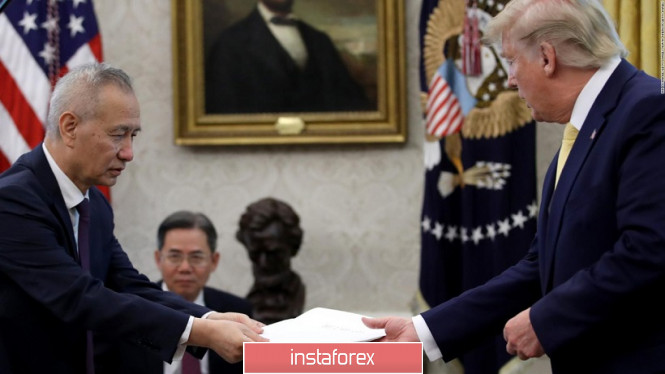The euro-dollar pair shows amazing durability at the beginning of this year. The bears of EUR/USD put pressure on the pair with an enviable regularity, however, buyers always return the price to previous levels. For two weeks in January, sellers could not gain a foothold in the area of the 10th figure, although such attempts were made repeatedly. Nevertheless, the overall vulnerability of the US currency does not allow the bulls of the dollar to develop a downward trend for the pair.
Moreover, the events of the current week logically fit into the general outline of the latest trends. The bears of EUR/USD made another attempt to decline to the area of the 10th figure after the release of conflicting data on the growth of American inflation, but they were able to only reach the level of 1.1104 instead, after which they began to actively buy the pair. Today, the upward dynamics has continued again, thanks to the general weakening of the dollar. On the other hand, the European currency has recently behaved modestly, due to the lack of information lines. In almost all cross-pairs, the euro is weak. With the exception of the euro / franc pair, which declined to three-year lows. But in this case, we are only talking about the rise in price of the Swiss, and the euro only follows the quoted currency.

The same can be said about the EUR/USD pair. Here, a mirror situation has only developed, since the price is rising only due to the devaluation of the dollar. The American currency came under pressure from several fundamental factors. Firstly, in anticipation of the signing of the first phase of the U.S.-China trade deal, rumors appeared in the market that Washington did not intend to lower tariffs imposed on Chinese goods previously, at least until the presidential election in November this year. Yet, it is worth noting immediately that this information is unofficial in nature - it was distributed by reporters of the Bloomberg agency. Nevertheless, the currency market took this signal quite seriously: the yuan slowed down the strengthening process, and the dollar index began to show a downward trend. The euro-dollar pair, respectively, rose to the level of 1.1160.
In turn, US macroeconomic statistics added fuel to the fire. Disappointing retail sales were released today after slurring non-farms and conflicting data on inflation in the United States. Meanwhile, the Producer Price Index is an early signal of changes in inflationary trends – the negative dynamics of this indicator. Therefore, its decline was negatively perceived by dollar bulls, especially against the background of other inflationary releases.
Thus, the December producer price index on a monthly basis increased by only one tenth of a percent, after falling to zero (experts predicted growth to 0.2%). In annual terms, this figure rose to 1.3%, which coincided with the forecasts of most analysts. The basic PPI, that is, the producer price index without taking into account the prices of foodstuffs and energy carriers, has completely entered the "red zone" - both in annual and monthly terms. For example, the indicator has been consistently decreasing for the past four months on an annualized basis - if the index was at around 2.9% in August last year, then it has reached 1.1% today. This indicator fell to many-year lows - the it was on such bottoms only in August 2016 last time.
However, long positions in the pair still look risky despite such disappointing reports, as well as short ones. Toward the close of the American session, a ceremony of signing the first phase of the deal between the United States and China should be held. The head of the White House and Vice Premier of the State Council of the PRC Liu He will certify with their signatures an almost 90-page document at the reception, where hundreds of high-ranking guests from business, government and diplomatic circles will be present. In such an environment, the parties are unlikely to voice any negative signals. Therefore, the dollar may receive some support, amid peace-loving rhetoric. On the other hand, a newsletter will be published on the text of the trade agreement a bit later (obviously tomorrow or the day after tomorrow). This document may return a certain negativity to the market.

According to rumors, Beijing has made only vague obligations in terms of protecting intellectual property and liberalizing the financial services market. In addition, the negotiators decided to discuss the most complex and strategically important issues in the course of further negotiations, which will begin (most likely) in February. In other words, the parties managed to postpone the conflict for a while, putting the trade war on hold. However, the euphoria about this fact will quickly come forward. Beijing and Washington have not been able to solve key problems, taking the issue of structural reforms in China out of the negotiations.
All this suggests that the EUR/USD pair may demonstrate false price movements in the near future. The current price increase should also be rather skeptical, in view of the above reasons. At the moment, it is worthwhile to maintain a wait-and-see attitude until the market acquaints itself and renders its "verdict" to the first phase of the trade transaction.
The material has been provided by InstaForex Company - www.instaforex.com